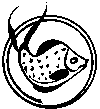 |
| Turiang |
28 Oct 2001
|
|||
| Last modified: 28 Oct 2001 |
The Turiang's multinational cargo both challenges the chronology of Thai ceramics and presents its own dating puzzle. One intriguing issue is the absence of blue-and-white porcelain from either China or Vietnam, and the large load of Chinese celadon. Could this wreck be so old that it pre-dates the export of Chinese blue-and-white, now estimated to have started in 1328?(1)
The years of work at the Thai kiln-sites are of little assistance in dating the Turiang. However, the ceramics excavated from the Ko Si Chang Two wreck, with a carbon 14 date of 1290 +/- 60 years, may be relevant. The Ko Si Chang Two site was looted before even cursory inspection, but provided a few underglaze wares similar to those on the Turiang, for which no manufacturer was suggested. However, a fragment of an unusual high straight-rimmed celadon dish(2) appears identical to several found on both the Turiang and the Longquan.(3) Thus the Ko Si Chang Two carbon date gives us one starting point for dating the Turiang ceramics.
The Chinese celadons were shown to a number of experts, in an attempt to date these independently from the Thai ceramics.
Professor Jan Wirgin of The Museum of Far Eastern Antiquities in Sweden viewed detailed photographs of all the Chinese celadon types from the Turiang and suggested, subject to actual inspection, that they may be from provincial kilns near Longquan and could have been manufactured in either the late Yuan or the early Ming periods(4) - ie either side of 1368.(5)
Professor Wang Qingzheng of Shanghai Museum saw the same set of photographs, reaffirmed that the celadons were 'Longquan Yao', and dates them as 14th to early 15th century. His personal view, subject to inspection, is that they are more likely to have been made after 1371 than before.(6)
Roxanna Brown, adjunct curator of Southeast Asian ceramics at Pacific Asia Museum in California, personally inspected all of the recovered wares and is of the opinion that the Chinese celadon and the Thai ware may date to the early part of the 14th century. The calibrated carbon 14 range of the Ko Si Chang Two shipwreck supports this date.
An early or mid 14th century date would also correlate with the ship type, which is of Chinese construction using temperate-climate wood. Later vessels with the observed shipbuilding details are likely to have been of South China Sea type and built from tropical hardwood.
It seems reasonable to assume that a vessel built in China and heavily loaded with Chinese ceramics was originally loaded in a Chinese port. If so, it is likely that this was before the Ming ban of 1371, as the ports were closely guarded and departures dwindled after that date. The volume of Vietnamese ceramics suggests that the ship stopped in Vietnam, which might not have been a safe option post-1371, as the Vietnamese kings were known to report illegal departures to the Chinese authorities.
A Chinese vessel stranded in Ayudhya following the ban is worth considering. Both Chinese and Vietnamese ceramics were commonly available in that port. However, it seems unlikely that the large quantities of Chinese ceramics on the Turiang would have been available in Ayudhya following the ban. The rather voluminous Thai ceramic cargo is also less likely to have been available in Ayudhya then: Ayudhya's prolonged war with Si-Satchanalai/Sukhothai between 1372 and 1378 is likely to have prevented river transport from the kilns. Use of the Ayudhya port for consolidation of cargo or even for transit was becoming less popular at this time. The imposition of export taxes, compounded by demands for 'gifts' on return, were irritations which may have contributed to the war.
A departure date following the 1378 peace treaty, when Sukhothai and Si-Satchanalai became vassals of Ayudhya, does not correspond to the mix of cargo. By that time, the potters at Si-Satchanalai would have developed the mature celadon, and the variety on any ship after that date would be different.
Consequently, the only dates likely for the Turiang to have loaded her cargo and departed safely from China, visited Vietnam, and loaded pre-celadon ceramics in Thailand, are before the 1371 ban.
Radiocarbon dating of a piece of structural timber from the Turiang gave a conventional carbon age of 620 +/- 50 years BP.(7) While the sample was reportedly suitable for the purpose, it was also subjected to cellulose extraction in order to achieve highest possible precision date. Following calendar calibration, adjustments for additional year-rings, and allowing time for seasoning of the timber, construction of the ship, and some years in service, the result is a 95% probability for a date of ship's loss anywhere between AD 1305 and 1435.
Comparisons with the Ko Si Chang Two and Royal Nanhai both strongly suggest that the Turiang sank in the earlier part of this range. This is based on the difference in the Thai ceramics in the different ships, allowing time for new kilns to be developed, technical aspects of production to be refined, and stylistic changes to emerge.
The tentative working date, adjusted to correlate with all the above, is AD 1360+/-.
| Turiang overview | Maritime Asia homepage | Next: other wrecks |